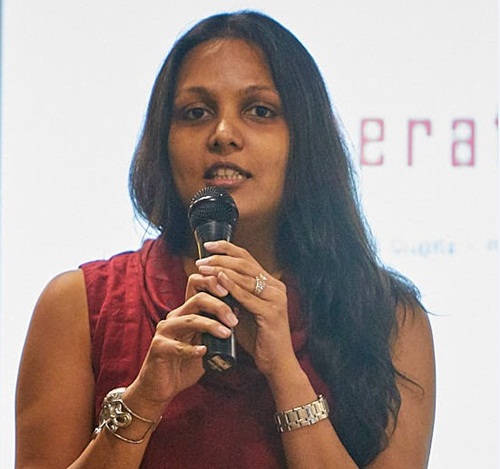What makes people in any organisation happy? Payal Gupta, director and CEO of Mumbai-based development and change management organisation Celebratory Network, talks to domain-b’s Nithin Rao on an interesting survey it conducted recently to track ‘happy-ness’ at the workplace
Happiness at the workplace is something that eludes many organisations both in India and abroad. Are employees generally happy at the work place? If many of them are not, what should a firm do to develop employee satisfaction?
These questions are paramount in the minds of many top executives both in the public and private sectors. And to find out the ground situation, a Mumbai-based firm, which is involved in organisation development, diversity and inclusion, family business consulting and helping develop happy workplace cultures, recently conducted a survey to index the happiness quotient among employees.
The Benchmarking on Happyness at Workplace 2019 survey, seeks to showcase the determinants of workplace happy-ness, highlighting the impact of demographic characteristics and job profile on these determinants.
“The findings of this survey indicate that the growth of employees in an organisation as well as their relationships with their supervisors, peers and subordinates predominantly drive ‘Happyness’ at workplace,” explains Payal Gupta, director and CEO, Celebratory Network. “Employees say that it’s not only the instances of recognition or achieving the goals, but also challenges, learnings and enriching work that makes them feel deeply happy at work.”
And the survey reveals that politics, negativity, bureaucracy and low pay count amongst the top unhappy experiences.
Nearly 200 people were interviewed for the survey; though the majority were in India, some in the UAE, the UK, the US and Europe were also included.
Established in 2012, Celebratory Network has worked actively with both the public and private sector companies and NGOs. “We have also started expansion in the Middle East, Europe and North America,” says out Gupta. “Projects in the UAE and Europe on Happy Workplace Cultures have been completed.”
The firm, whose major clients in India include the Aditya Birla Group (including Hindalco), JSW Infra and Liberty Mutual Insurance, says it has grown four times since inception. It now plans to make its presence felt in Europe and the Americas, including the US.
According to Gupta, organisation development projects including ‘Happy Workplace Cultures and Change Management’ are the major sources of revenue for the company. “Family managed businesses and corporates are our major clients,” she explains.
“We are focusing on the professional individual, looking at how he/she contributes or not to their own ‘happyness’ at work through our course ‘Deliberately Happy Professional,” says Gupta.
The Benchmarking on Happyness at Workplace report provided an opportunity to identify the determinants of happiness at the workplace, along with the variations among different individual and organisational profiles.
“It is evident from the survey that the growth within an organisation was found to be linked with both happy as well as unhappy experiences of the organisation,” notes Gupta. “While certain characteristics under the theme of relationships such as approachable seniors, healthy relationships and support made employees feel happy, the unhappy experiences were reported under themes of practice and processes such as bureaucracy, injustice and power play.”
Key messages for a happy workplace
The survey resulted in the identification of key areas that would ensure a happy workplace. They include:
• Inclusive growth
• Team engagement
• Treating everyone with dignity and respect
• Dynamism in challenges and learning opportunities
The Happy Work Culture (HWC) practice aims to understand the person, the organisational culture and its impact on individuals and businesses. It aims to:
• Provide a tool to access the intuition of employee
• Bring understanding who the employees are as individuals
• Gather employee’s experience for the desired culture
• Engage in dialogues to learn stories that are enabling and blocking ‘Happyness’























